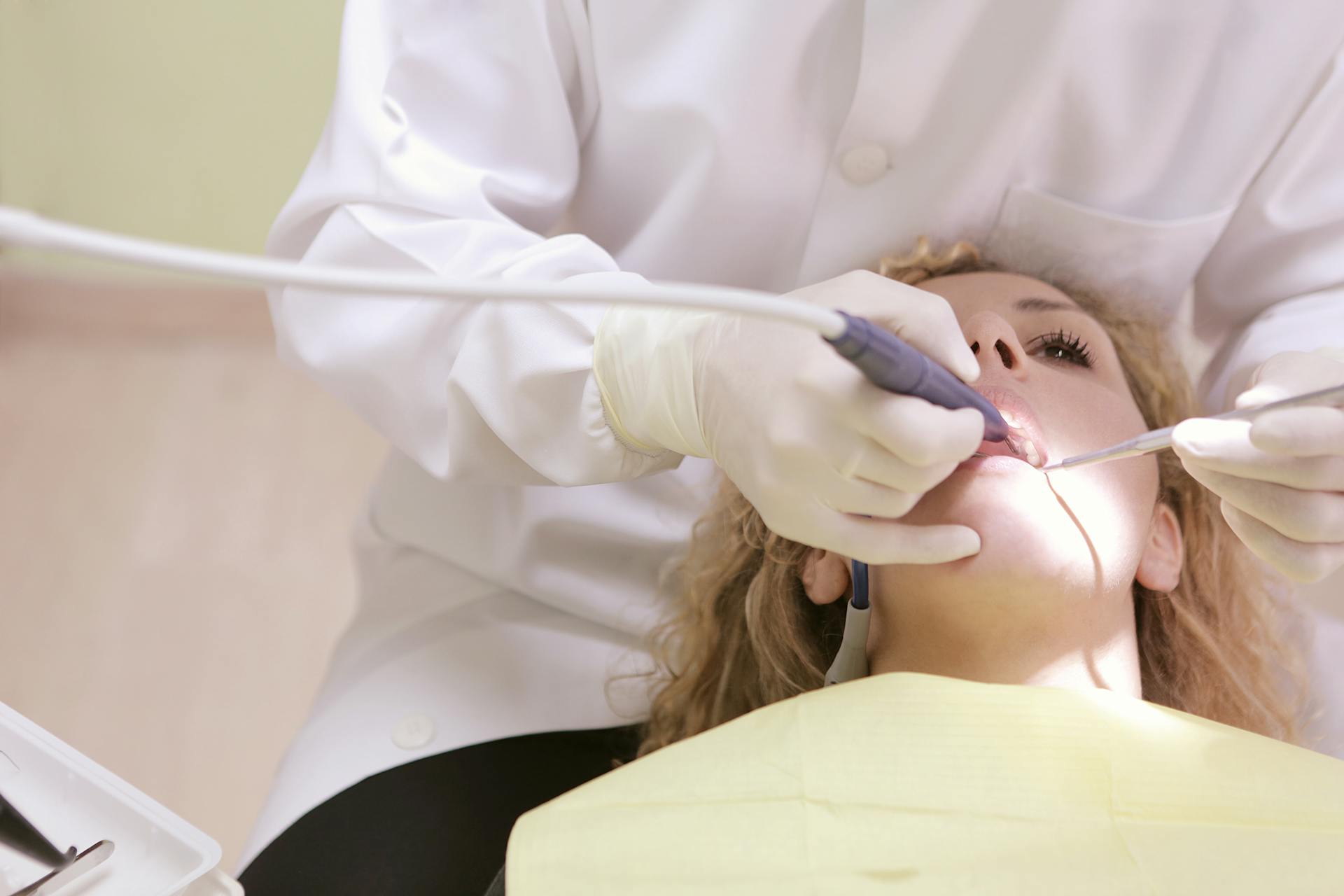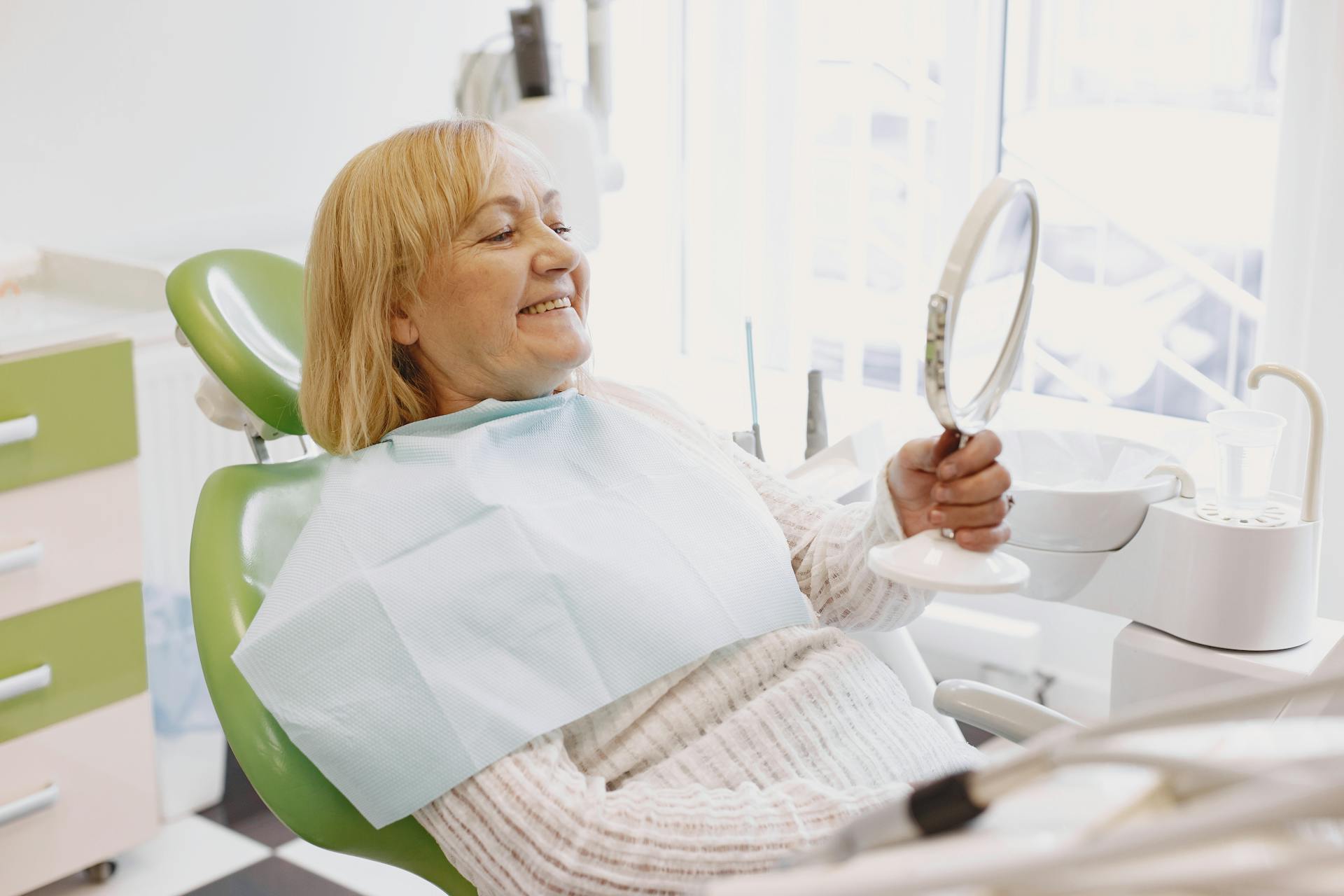
There is no one definitive answer to this question – it depends on each individual’s specific dental needs. However, as a general guide, the American Dental Association (ADA) recommends that dental x-rays (bitewing and panoramic) be taken at least once every two years for most people. Children and adolescents may need them more frequently, depending on their oral health.
If you have poor oral hygiene, are at high risk for cavities or gum disease, or have had previous dental work, you may need to get x-rays more often. Your dentist will be able to advise you on how often you should have them taken, based on your individual circumstances.
Dental x-rays are an important part of maintaining good oral health. They allow your dentist to detect problems that cannot be seen with the naked eye, such as cavities between your teeth or in the roots of your teeth. They can also help to identify other problems, such as tumors or cysts.
While dental x-rays do emit a small amount of radiation, the risks are minimal. Modern x-ray machines use very low levels of radiation, and the small amount of exposure is offset by the benefits of early detection and treatment of dental problems.
If you have any concerns about dental x-rays, be sure to discuss them with your dentist. They will be able to answer any questions you have and explain the risks and benefits in more detail.
Related reading: Teeth Cleaned
What are the benefits of getting dental xrays?
There are many benefits to getting dental x-rays. They can help to diagnose problems at an early stage, before they become more serious. They can also help to determine the cause of pain or other symptoms. X-rays can also be used to monitor the progress of treatment, or to check for problems after treatment has been completed.
Dental x-rays are a painless and quick way to obtain important information about your teeth and mouth. They can help your dentist to:
• Find hidden decay
• Check for gum disease
• Plan treatment for crooked or crowded teeth
• Check the status of previous dental work, such as fillings, crowns, or implants
• Check the development of your child's teeth
Most people need dental x-rays every one to two years. The frequency depends on your age, dental history, and current oral health. Your dentist may recommend x-rays more or less often than this, depending on your individual situation.
The amount of radiation you are exposed to during a dental x-ray is very small. In fact, you are exposed to more radiation from everyday activities, such as taking a transcontinental flight, than from having dental x-rays. Dental x-rays are considered safe for both adults and children.
If you are pregnant, or think you may be pregnant, tell your dentist. He or she will determine whether dental x-rays are necessary, and if so, how many and what type to take. In most cases, dental x-rays can be postponed until after the baby is born.
If this caught your attention, see: Teeth Whitened
Are there any risks associated with dental xrays?
Yes, there are definitely risks associated with dental x-rays. They are small, but they are there. The biggest risk is that of radiation exposure. dental x-rays use very small amounts of ionizing radiation, which can damage cells and lead to cancer. The chance of developing cancer from a dental x-ray is extremely low, but it is still a risk. Other risks include allergic reactions to the materials used in the x-ray, and damage to the teeth or jaw from the x-ray machine.
How do dental xrays help to diagnose problems?
Dental x-rays are an important diagnostic tool that helps dentists detect problems not visible during a visual examination, such as decay between the teeth or in the roots of teeth, and tumors. They can also be used to help determine the cause of pain.
Dental x-rays are safe and involve very low levels of radiation. The amount of radiation exposure from a dental x-ray is very small, and the risk of developing cancer from dental x-rays is extremely low.
Dentists use dental x-rays to:
Detect decay that is not visible during a visual examination
Detect tumors
Assess the health of the jawbone
Detect problems with the roots of teeth
Guide dental treatment planning
Dental x-rays are an important diagnostic tool that helps dentists detect problems not visible during a visual examination. Decay between the teeth or in the roots of teeth can be detected on dental x-rays. Tumors can also be seen on dental x-rays.
Dental x-rays can also be used to help determine the cause of pain. Pain in the teeth or jaw can often be the result of problems not visible during a visual examination. Dental x-rays can help identify these problems.
Dental x-rays are safe and involve very low levels of radiation. The amount of radiation exposure from a dental x-ray is very small, and the risk of developing cancer from dental x-rays is extremely low.
What do dental xrays show?
Dental x-rays are an important diagnostic tool that dentists use to identify problems with teeth and the surrounding bone. They can show cavities, bone loss, and other abnormalities. X-rays are a type of electromagnetic radiation, and when they pass through the body, they produce an image on a film or digital receptor. The image is then interpreted by the dentist.
Dental x-rays are generally taken on an annual basis to check for changes in the teeth and jawbone. They can also be taken more frequently if a problem is first detected or if there is a concern about a specific tooth. X-rays are an important part of the preventative care that dentists provide because they can identify problems early, before they become more serious.
The American Dental Association (ADA) recommends that all adults have at least one set of dental x-rays every three to five years. However, the frequency of x-rays may vary depending on a person’s age, oral health, and risk for dental problems. For example, people who have a history of tooth decay or gum disease may need x-rays more often than those who do not.
Dental x-rays are considered safe. The amount of radiation exposure from a dental x-ray is very low, and the risks are generally outweighed by the benefits. X-rays allow dentists to identify and treat problems early, before they become more serious.
If you have concerns about radiation exposure from dental x-rays, talk to your dentist. He or she can explain the risks and benefits of dental x-rays and help you decide if they are right for you.
How can dental xrays help to prevent problems?
Dental x-rays are a vital part of oral healthcare. They help dentists to identify problems with teeth and gums that cannot be seen with the naked eye.
Dental x-rays can detect cavities that are just beginning to form. In the early stages of a cavity, the x-ray will show a dark spot on the tooth. This allows the dentist to treat the cavity before it gets larger and causes more damage to the tooth.
Dental x-rays can also detect problems with the jawbone. If there is any unusual bone loss, the x-ray will show this. This is important because it can help to diagnose conditions such as osteoporosis.
X-rays can also reveal other problems such as abscesses, cysts, and tumors. These conditions can be treated more effectively if they are found early.
Dental x-rays are a painless and quick way to detect problems that could lead to more serious dental problems down the road. They are an important part of oral healthcare and should be part of your regular dental check-up.
What are the different types of dental xrays?
There are four different types of dental x-rays: bitewing, periapical, panoramic, and endoral.
Bitewing x-rays are the most common type of dental x-ray. They are taken to check for decay in between the teeth. Periapical x-rays are taken to check for decay at the end of the tooth root. Panoramic x-rays are taken to get a broad overview of the teeth. Endoral x-rays are taken to check for decay in the bones of the jaw.
Dental x-rays are important for detecting decay, tumors, and other problems with the teeth and bones. They are often the first step in diagnosing and treating dental problems.
How are dental xrays performed?
Dental x-rays are diagnostic tools that help dentists evaluate the health of your teeth and jaws. There are three types of dental x-rays: intraoral, extraoral, and panoramic. Intraoral x-rays are the most common type of dental x-ray. They are taken using a small, handheld x-ray machine. Extraoral x-rays are taken using a large machine that takes x-rays from outside of your mouth. Panoramic x-rays give a sweeping view of all of your teeth and jaws.
Dental x-rays are painless and quick. Intraoral x-rays take about 10 seconds, while extraoral and panoramic x-rays take about 15-20 seconds. During the x-ray, you will be asked to bite down on a small, circular piece of film. This helps to keep your teeth and jaws in place during the x-ray.
Dental x-rays are an important part of preventative dental care. They allow dentists to find and treat problems early, before they become more serious. Dental x-rays are also used to plan treatment for more complex dental problems.
If you are pregnant or think you may be pregnant, tell your dentist before having a dental x-ray. Dental x-rays are safe for both you and your baby.
What should you expect during a dental xray?
A dental xray is a diagnostic tool that provides detailed images of your teeth and supporting structures. This information helps your dentist determine the best course of treatment for your oral health.
During a dental xray, you will be positioned in a chair or reclined position so that your head is level with the x-ray machine. A small, metal shield will be placed over your gums to protect them from the x-ray beam. Once you are positioned properly, the x-ray machine will be turned on and a film will be placed inside your mouth next to your teeth. The x-ray machine will then emit a brief burst of x-rays that pass through your teeth and create an image on the film.
The entire process usually takes less than a minute to complete. You may be asked to hold your breath for a few seconds while the x-ray is being taken. This is to minimize any blurring of the image.
After the x-ray is complete, the film will be removed from your mouth and developed. Your dentist will then review the images to check for any problems. If everything looks normal, you will not need to have another dental xray for at least a year. If your dentist sees something of concern, additional x-rays may be needed.
There is no need to worry about the x-rays harming your health. The amount of radiation you are exposed to during a dental xray is very low. In fact, you receive more radiation from everyday activities, such as eating food that has been exposed to the sun, than you do from a dental x-ray.
Frequently Asked Questions
How often do kids need dental X-rays?
Dental x-ray needs vary depending on your individual risk factors for tooth decay: If you are at high risk of developing cavities (have a history of them), then dental x-rays must be done every 6 to 12 months. If you don’t have any risk factors, dental x-rays can be done every 12 – 24 months.
Do you need a dental X-ray?
At St. John’s Dental Associates, we highly recommend that everyone have X-rays done at least every six years. A dental x-ray can help to rule out any potential problems with your teeth and gums, and it can also give you an overall idea of your dental condition. Dental x-rays are particularly useful for diagnosing: cavities tooth abscesses badly fractured teeth implants If you have any further questions about when or if you should have a dental x-ray, please don’t hesitate to come see us.
How many times a year should you go to the dentist?
There’s no one-size-fits-all answer, as the frequency of dental visits will vary based on your individual situation and bite. However, the ADA recommends going to the dentist twice per year for healthy teeth and gums.
What are the benefits of a dental X-ray?
When your dentist takes an x-ray, he or she can see through the tooth and into the recesses of the jawbone to spot potential problems. This allows your dentist to diagnose and treat any dental issues in a short amount of time. Dental x-rays also allow your dentist to view hidden teeth if they are needed for a root canal or other procedure. This is important because it sometimes requires extra work or special tools to get access to these teeth. By getting an x-ray beforehand, your dentist can avoid any unnecessary complications. What should you do before your dental X-ray? Make sure to schedule an appointment with your dentist as soon as possible so that he or she can properly prepare for the scan. Bring along any necessary paperwork, such as a current health insurance claim form or proof of residency. Be aware that some insurance companies may require a doctor’s note before allowing you to have a dental X-ray.
When are dental X-rays necessary for children?
Bitewing x-rays are recommended every six to 18 months for a child with an increased risk of tooth decay and every 12 to 36 months for a child at low risk. For an adolescent with permanent teeth but no wisdom teeth, the dentist might take bitewing x-rays of the back teeth, front teeth, and molars if there is any concern about tooth decay.
Sources
- https://beachdental.com/dental-x-rays-what-do-they-really-show/
- https://dentalpickup.com/what-do-dental-x-rays-show/
- https://westoldsdental.ca/dental-x-rays-how-often-is-enough/
- https://www.colgate.com/en-us/oral-health/x-rays/the-importance-of-dental-x-rays
- https://www.clinicspots.com/question/how-often-should-you-get-dental-x-rays
- https://www.ada.org/resources/research/science-and-research-institute/oral-health-topics/x-rays-radiographs
- https://www.vinmec.com/en/news/health-news/general-health-check/how-is-a-dental-x-ray-performed/
- https://franckdental.com/different-types-of-dental-x-rays/
- https://dentalsave.com/blog/how-often-should-we-get-dental-x-rays/
- https://www.madisonnofeardentistry.com/post/the-importance-of-dental-x-rays-and-your-protection-from-radiation
- https://www.mkcdentists.com/what-do-dental-x-rays-show/
- https://www.evansondds.com/dental-x-rays-weighing-the-risks-and-benefits/
- https://www.silverscreendental.com/what-do-dental-x-rays-show/
- https://capozzidental.com/blog/what-are-the-benefits-of-dental-x-rays/
- https://drmaymi.com/6-types-of-dental-x-rays/
Featured Images: pexels.com


